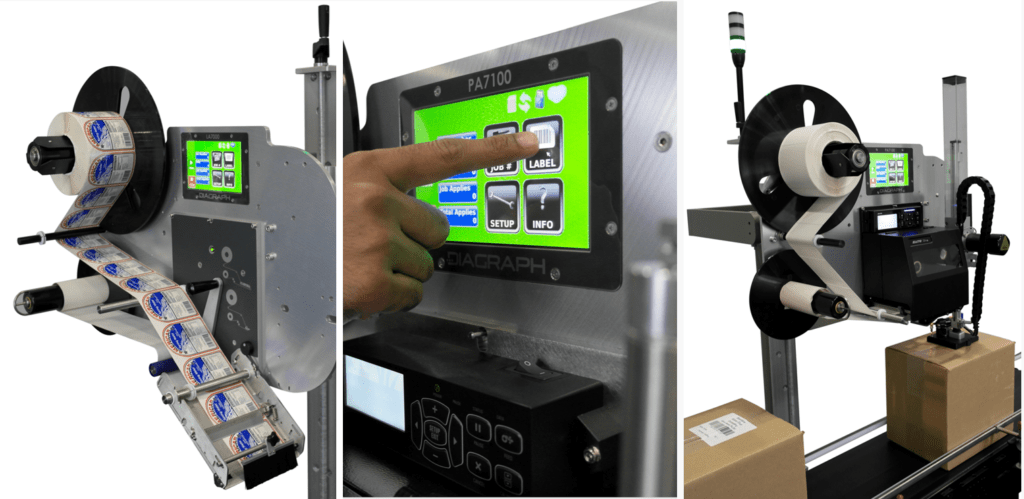Coding, Marking, and the Future of Labeling

Marking and coding are integral to traceability and identification across every industry. They are especially crucial to combating counterfeiting and recalling products for consumer safety. When choosing a partner for your marking and coding needs, select a provider that can meet the rigorous labeling standards of major retailers in the U.S. Here we will explore the importance of labeling for retailers, changing technologies in marking and coding equipment, the rise of QR codes, and more to help you select a labeling partner.
Browse Our Marking, Coding, and Labelling Machines
What’s Driving Growth in Marking and Coding?
Coding and marking are essential to meeting traceability requirements, fortifying the supply chain, and improving response to product recalls. If a manufacturer identifies a complaint, they can trace the lots and shipments of all affected products and make an effective recall. The improved traceability of coded and marked products helps address the growing pressure from stakeholders, consumers, and government regulators to provide accurate information about the origin of ingredients and materials in products.
According to an August 2022 article in Supply Chain Management Review, 96% of organizations surveyed believe it’s beneficial to use a single platform for all their direct marking, coding, and thermal transfer needs. 78% of respondents expect coding and marking requirements to increase over the next three years.
Coding and marking allow the manufacturer to prove a product’s authenticity. By providing identification information, consumers, retailers, and other groups or individuals can trace the product to its original manufacturing location, ensuring its authenticity and safety for transportation, sale, and use.
For instance, in 2021 Amazon identified, seized, and disposed of over 3 million counterfeit products resellers were attempting to sell to consumers. Counterfeit products risk the safety of consumers as well as the reputation of manufacturers and e-commerce businesses. In response to counterfeit products, experts at Business Insider expect the global anti-counterfeit packaging market to increase by 45% from 2018 to 2026.
Embracing Technological Improvements
The labeling software landscape is evolving so that previously manual systems can now be connected and integrated by centralized control systems. Companies are using these centralized, standardized platforms to meet labeling requirements. The platforms offer integration and management of all devices, including:
- Inline printers applying directly to your product or cases
- Print-and-apply on-demand labeling systems
- Hand coding and marking devices
- Visual inspection devices
The Rise of QR Codes Over Barcodes
QR codes are rising in popularity as a marking solution. While a barcode provides up to 25 characters, QR codes offer as many as 2,500 characters, allowing manufacturers to store more product information, including the URLs to product pages or manufacturers’ websites. Furthermore, barcodes store information in horizontal parallel lines (1D), while QR codes store information horizontally and vertically (2D). This makes QR codes easier for scanners to read. While scanners must be pointed directly in line with barcodes, scanners can read QR codes from any angle.
QR codes are less prone to degradation and are more efficient at storing information. Their margin of error correction is high, allowing the code to be scanned even if approximately 30% of the code is damaged, erased, dirty, or unreadable. QR codes can also be read when up to 10 times smaller than barcodes.
Growing Importance of Retailer Marking and Coding Requirements
To improve the efficiency of the ordering and receiving process, retailers are implementing rigorous shipping labeling standards. These requirements mandate vendors to ensure compliance before delivery to the retailer. Vendors can rely on labeling specialists for guidance in selecting the correct marking and coding equipment for their needs.
According to a 2018 study by McKinsey, non-compliant vendors in the U.S. consumer packaged goods (CPG) industry could face retailer penalties amounting to $5 billion every year, cutting into vendor profits by 1%. Two of the largest retailers in the U.S., Amazon and Walmart, are leading the industry in detailed requirements for labeling. Labeling companies with knowledge and experience working with these large retailers can handle labeling to ensure shipments comply with the retailer’s requirements.
Turn to TPC Packaging for Innovative Product Labeling
Coding and marking is a growing industry fighting against counterfeiting, recall, and traceability concerns. Labeling systems are becoming interconnected to deliver greater efficiency and convenience for manufacturers, retailers, and consumers. Many manufacturers are also transitioning from standard barcodes to QR codes for more information storage and readability. We expect labeling to continue growing as major retailers implement stricter labeling requirements.
TPC Packaging has been in the packaging business since 1967. We can adapt our industrial coding, marking, and labeling systems for your business. Contact us to speak with a specialist about your marking and coding equipment needs.